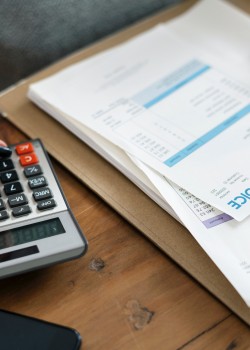Are You Paperless or Paperful? – Baby Steps for the Not-so-Tech Savvy

Although several of us at The Organizing Professionals absolutely LOVE organizing paperwork we recognize we are the minority. For many of our clients, the constant onslaught of incoming mail and other papers increases stress and leaves them feeling overwhelmed. Where to begin?
There are many articles on how to go paperless. Many share wonderfully helpful advice but alas, for the non-tech savvy, the information seems intimidating.
Here are a few baby steps to help you curb the paper clutter:
Much of our mail can now be accessed online. Most of us no longer need to receive paper statements for our bank accounts, investments, credit card statements, insurance policies or utility bills. Receiving these statements electronically will dramatically reduce the paper clutter in your home plus save you countless hours of filing. Who doesn’t want that?
If you currently lack a filing system for your incoming mail start collecting next month’s mail in a separate container. Open any mail as you normally would and look over the envelope. Find the place on either the statement or the envelope where it says “Go Paperless” or “Receive Statements Electronically.” Grab a highlighter and highlight the web address on the envelope or statement. Place the statement back in the envelope as you’ll need your account number in order to request electronic statements.
1. At the beginning of the next month, schedule an hour at your computer, grab your stack of highlighted statements and begin requesting online/electronic statements.
2. If you don’t have accounts set up online, you’ll need a place to write down your user prenames and passwords. For real paper-lovers, I recommend purchasing a little A-Z address book or password book. Jot down your information in the book using a pencil in case you need to change your passwords in the future. Keep the book in a safe but handy location.
3. I also recommending inputting this information on your computer; either as a word document, Evernote, Excel, or some other place. If you’re worried about this information getting hacked or losing your password book consider creating your own encryption. Create a strong base password containing a mixture of upper and lower case letters, a number and a symbol. Then add the first four or five letters of the institution at the end. For example your base password could be HelloKat!9 then add AMEX on the end for American Express.
4. Most credit card companies give you access of up to seven years of statements online. Many banks only offer up to 18 months. I recommend accessing your bank accounts online and saving your statements as a PDF to google docs, Dropbox and your computer’s hard drive.
If any of these steps still leave you scratching your head, please don’t hesitate to contact us. We are geniuses at taming the paper tiger!
Happy Organizing!
Janet